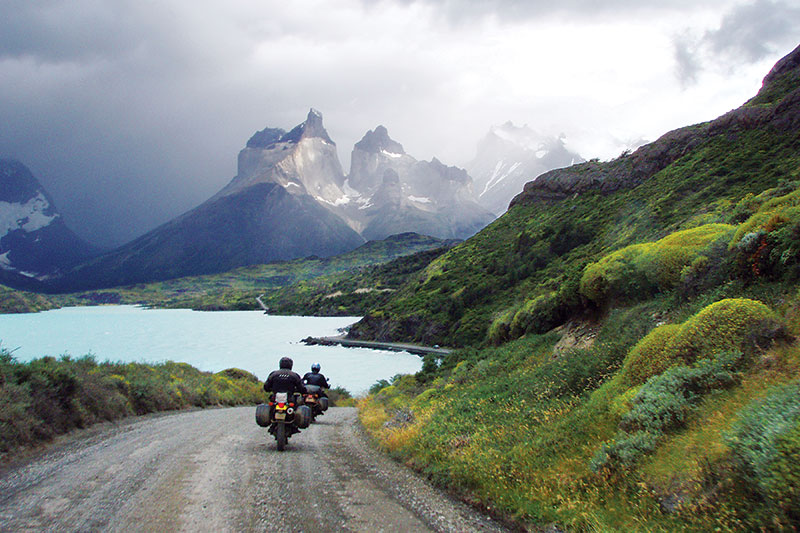
High-siding 6 feet in the air, Joaquin and his BMW R1200GS did a graceful 60-mph pirouette in front of me. Flying in front of the airborne bike, he had the presence of mind to fend it off before nose-diving into the brown Patagonian gravel. Even though I’d raced for decades, I’ve never had such a good seat for such a dramatic get-off (more often, I was the get-off-ee). Laying hard on my KLR’s brakes, my mind raced: “What’ll I do with my injured friend out here in the middle of nowhere?”
We’d been rattling down Argentina’s infamous partially graded Ruta Cuarenta (Route 40) since lunch, as the two of us returned from a side trip to the world-famous Cave of the Hands. The irony was that before lunch we’d been riding much faster. At lunch my thirtyish Mexican friend, a successful racer, had sagely chided me: “Bill, we’re like two bad kids who should not be allowed to play together,” and we agreed to ride more slowly on our return to the group. After all, there were thousands of miles ahead.
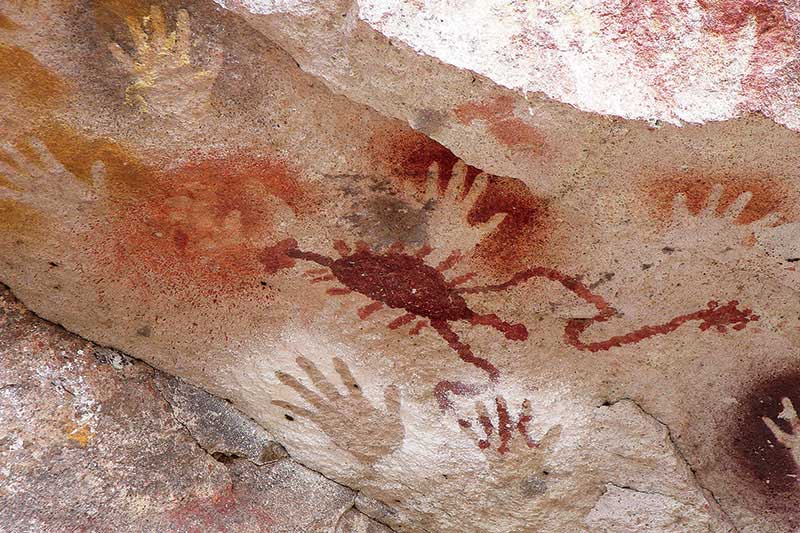

When his BMW’s front wheel got crossed-up and slid in one of the 6-inch rows of gravel, despite two lock-to-lock attempts to restore order, it re-caught, followed by the classic high-side. Despite being a real “yard-sale,” with panniers and driving light parts strewn about, after collecting himself he had only suffered a separated collarbone and a bloody nose. Still, the BMW was rideable, but Joaquin wasn’t.
Like an answer to my prayers, our faithful Mercedes diesel shag-wagon appeared shortly, able to carry him (and later another rider) to a doctor. It had been an eventful day, one of many in a month-long “expedition to the end of the world.”
Trip of a Lifetime
I’d always wanted to do it—ride to the end of the earth via the jaw-dropping scenery of the Andes; see the tallest mountain in the Western Hemisphere, Aconcagua; traverse high, craggy mountain passes and snake down 10,000 feet to sea level via Portillo’s 32 switchbacks; photograph penguins, walk on glaciers, ride like gods, eat and drink like kings.
I could have organized it myself. Heck, I do things like that in my job. But arranging bike importation, routing, accommodations and a backup vehicle in two Spanish-speaking countries was a headache I didn’t need. These days it’s easier than ever to just let one of several tour companies handle all those nettlesome details.
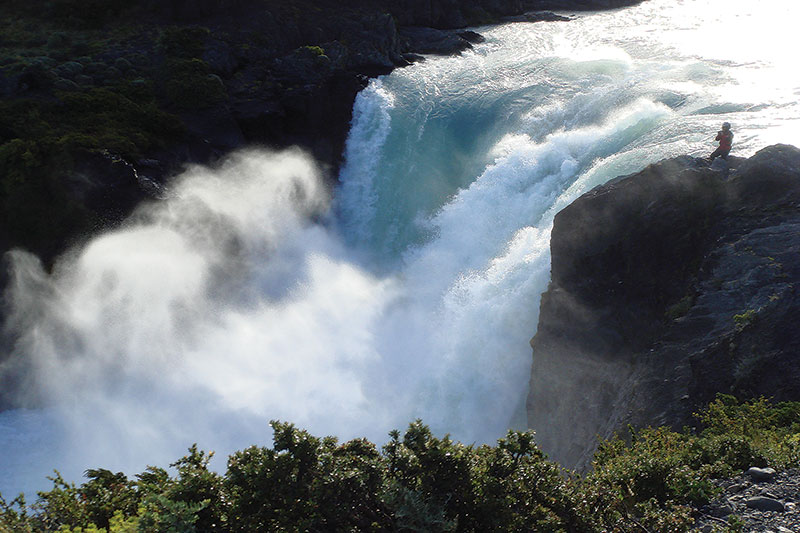
Even though my sons and I speak some Spanish, we contacted a company which has been organizing an annual Tierra del Fuego expedition for years, MotoDiscovery. Its month-long marathon does all that and more, covering more than 5,600 miles, nearly half unpaved. It’s nice for the evening’s toughest question to be: “Which wine, tinto or blanco?” And some of the world’s best come from Chile and Argentina.
Our Tierra del Fuego expedition was perfectly scheduled for the long hours of daylight provided by the austral summer in January and February. This meant we might be spared the endless blustery, rainy weather for which Patagonia is known. Thankfully we were, too, and had only a few days of rain and cold. Temperatures ranged from freezing to summer hot, which put a premium on good riding gear, and our Tour Master apparel passed the tough test.
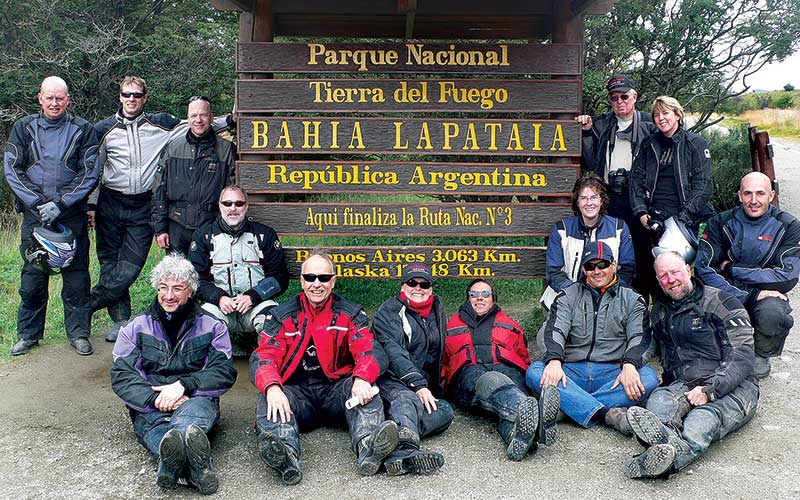
Our 10-bike group was diverse, aged 30ish to 70-plus, from all parts of the USA and one from Mexico, including two who carried co-riders on the back of their BMW F650s. We met and enjoyed, among others: John and Katy, geologists from Washington; “El Capitan” Tom, a sometime SCCA racer from Oregon with an infectious laugh; Knockout Dan, a bachelor anesthesiologist from Virginia who spoke fluent colloquial Spanish; and Joaquin the Mexican rocket who smoked the group on his BMW R1200GS.
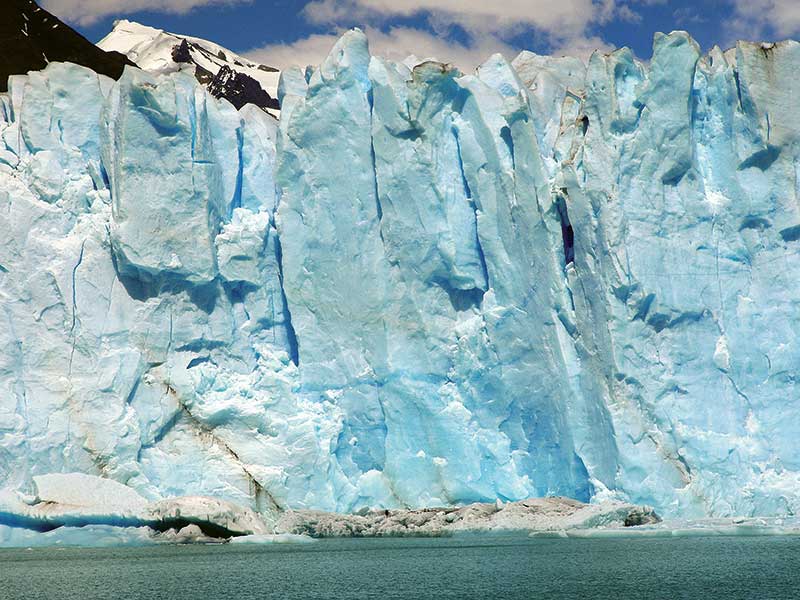
My two 40ish sons and I rode rented Kawasaki KLR650s, as did the majority of the group. Good choice, with its supertanker gas tank, long suspension and bulletproof reliability. Perfect strangers at the start, everyone shared a good sense of humor and plenty of riding experience. We quickly became comrades for a month’s shared adventure. Good thing, too, because accommodations were as advertised—“varying” in quality, ranging from three-star hotels (Hotel Ankara near Santiago) to corrugated steel-covered sheds (Hotel Posada Rio Serrano, Torres del Paine). Varied or not, all their beds felt great after hundreds of miles of gravel, or roller-coaster asphalt with blasting crosswinds.
Although we ate dinners and breakfasts together, we usually separated into speed-compatible subgroups for daily riding. Because of several side trips, my bike and I accumulated more than 6,000 miles by trip’s end.
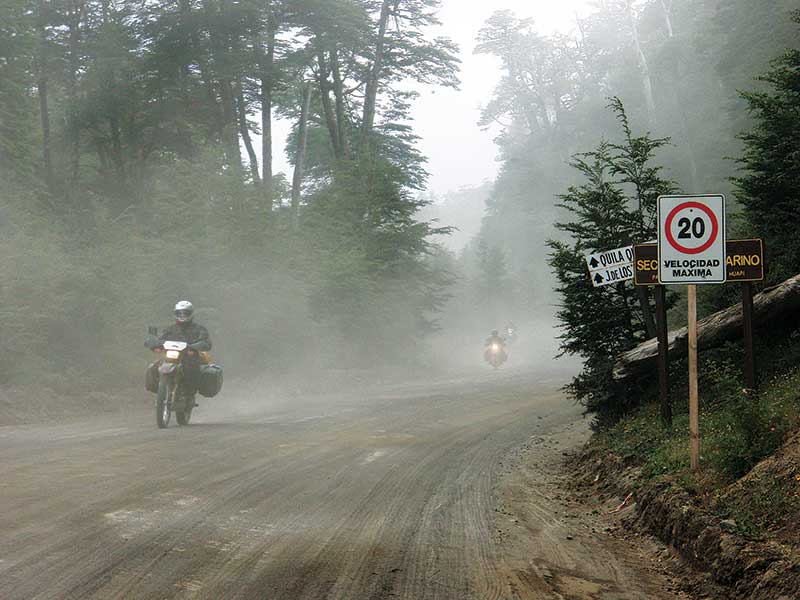
Knobbies in the Dark Rain
Ushuaia, on the southern side of Tierra del Fuego, may be the southernmost city on the planet, but even farther south on a long dirt-mud road lies Estancia Harburton, the site of a fascinating book, “The Uttermost Part of the Earth.” The appeal of riding even farther south and having an English Tea at this working ranch was so great that my son Christian and I ventured forth even though it was already late afternoon.
In these extreme latitudes sunset’s after 10 p.m., but our even later return produced a uniquely challenging ride. Upon leaving the 50-mile dirt road from Harburton, the additional 40 paved miles back to Ushuaia should have been easy. After all, on our ride out, we’d enjoyed the remarkably smooth, unmarked new asphalt through the sinuous, high Garibaldi Pass.

However, that same unmarked, dark, moist asphalt blended perfectly into the dark austral sky. Weakly illuminated by the small headlights of our muddy dual-sport bikes, it was impossible to identify the road centerline or edge.
As the temperature plummeted, it felt like it could snow at any time. Making haste would have been a good idea, but not here. Weaving drunkenly, we snaked back to our Ushuaia hotel. In the morning, when we looked back at Paso Garibaldi, the snow line covered our route. We’d made it through just before the door hit us in the butt.
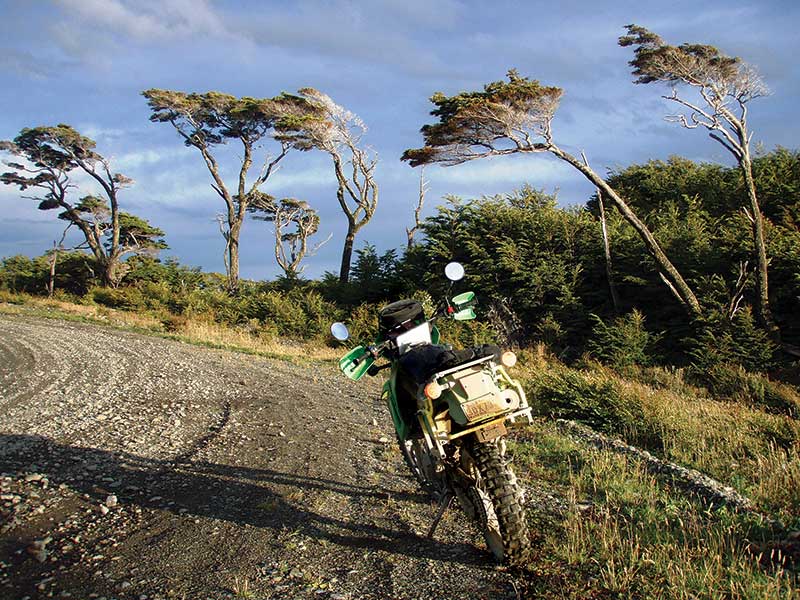
Embarrassing Lessons Dept.
Don’t drink the water: Everyone knows this, but when you’re hot and thirsty after packing a month’s worth of stuff on a new bike, it’s easy to forget. The reward for this carelessness was a full day of la tourista (traveler’s diarrhea).
Don’t let your attention wander: I witnessed what can happen when a very good rider gazes off into the distance while traveling at 60 mph on gravel. Shortly thereafter, he was still traveling 60, but without the support of his bike. I kept having to remind myself, “It’s a marathon, not a sprint. Ride conservatively.”

Spitting in the Wind
Torres del Paine’s 80-mph wind gusts reminded me of the old adage: “A sailor doesn’t pee (spit) into the wind.” So when nature called while I was photographing a rainbow created downwind of Salto Grande (The Great Falls) in Torres Del Paine Park, I knew just what to do. No fool, I just aimed downwind.
However, my careful planning didn’t take into consideration the downwind vacuum created by the fierce windblast, nor the updraft into my full-face helmet. Now I know why it’s called a “full-face” helmet. Kids, don’t try this at home. Find a sheltered place first.
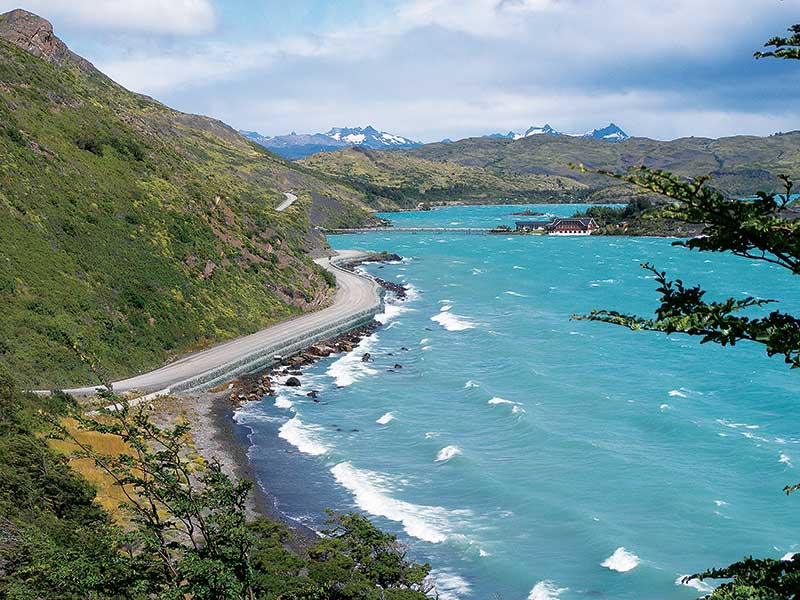
Speaking of Wind
Patagonia is all about wind, and since motorcycles with knobbies are, uh, lively if hit by side winds—especially on gravel—you have the formula for major “pucker-factor.”
When sailors refer to “the roaring 40s,” they aren’t referring to a midlife crisis. They mean the southern latitude with its endless winds. Many a schooner sank while trying to get around Cape Horn in winds so strong that sailors said, “South of 40 degrees there is no law; south of 50 degrees there is no God.” Tierra del Fuego is at 55 degrees south latitude.
You get a clue about the severity of the winds here when you see most ranch houses are carefully placed downwind of thick stands of wind-bent trees. Why does it blow so hard here? Unimpeded by most land masses, westerly winds flow around the globe at 40-50 degrees latitude, and then encounter the abrupt Andes chain which forces them up into the cold atmosphere. Cold and dense, they (“catabatics”) roll down the eastern slopes, accelerated by the rising-air vacuum created by the flat sun-warmed plains to the east.
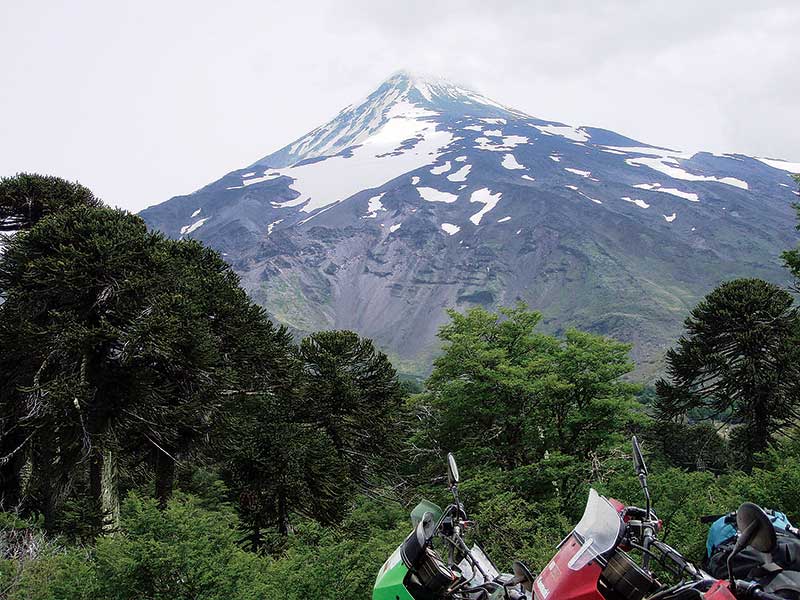
The fact that we had strong, knobby-crawling crosswinds for maybe only 10 of our 30 days was a blessing, but those 10 days were unforgettable. Getting literally blown off the gravel road at 30 mph in Torres del Paine was a first for me. Fortunately, there was a dirt embankment beside me, so I was just suddenly riding horizontally. No harm, no foul, but it sure impressed my son Christian, following behind.
Shortly thereafter, when we stopped at the crest of a hill to enjoy the amazing view, the fierce wind blasted the road’s gravel up into our helmets, flying around behind the face shields like crazed bugs. The conditions were so intense it was ludicrous. The noise was too much for conversation, and I didn’t want a mouthful of gravel anyway, so I glanced over at my son and he, too, was convulsed in laughter.
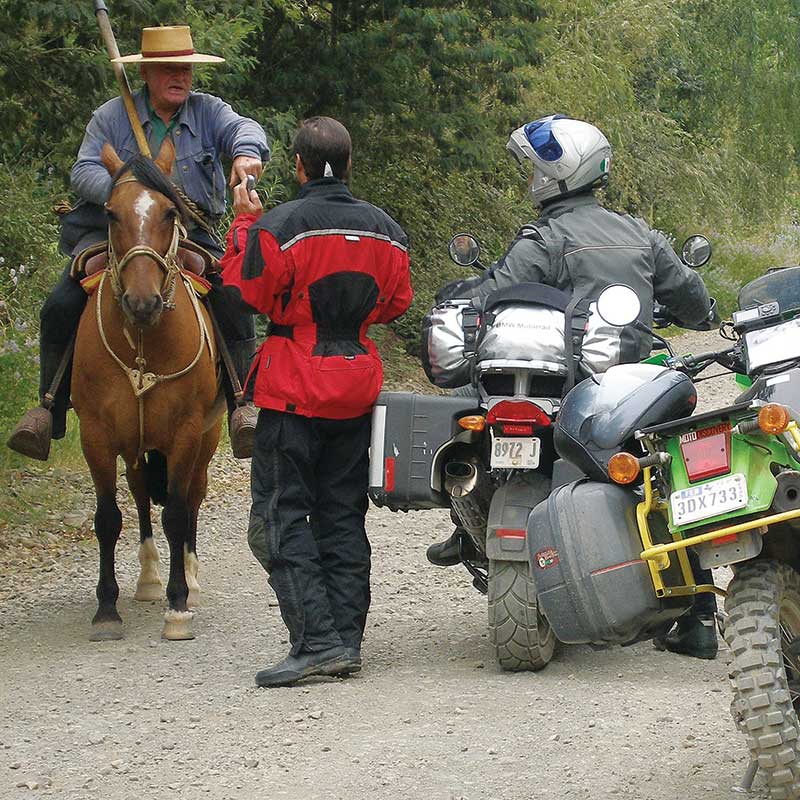
Fellow traveler John the geologist recounted how, that same afternoon, he’d been blown backward over the crest of a rise despite having his BMW F650 Dakar locked in first gear with the front brake on. He marked the spot with the now-broken shift lever.
Crosswinds on gravel were entertaining, but crosswinds on asphalt while cruising at 80 mph were scary. They required my best Kenny Roberts imitation just to track straight in the blasts, hanging off the inside of my KLR for hundreds of miles. The windblast from trucks passing in the opposite direction required advance planning. Weighing less than 160 pounds, with the windage of an extra-large seatbag, probably aggravated my weaving problems.
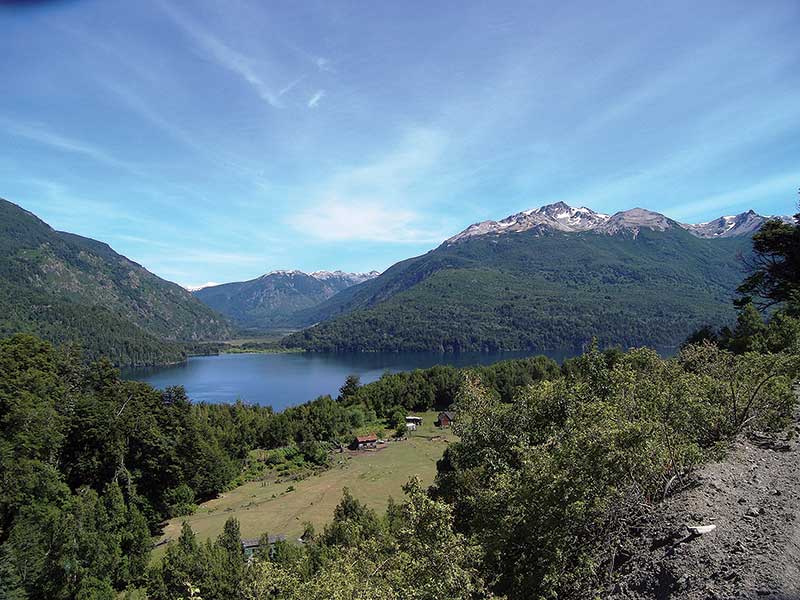
Unforgettable Beauty
Looming out of the Torres del Paine mist, above an opal-blue lake with sepulchral light streaming past, the golden granite torres (towers) defy both the eternal westerly windblasts and one’s perception of reality. Scoured clean of all softer material, their three dramatic spires surprise you with unique 3,000-foot vertical faces. In contrast, easily seen from a distance, Argentina’s Cerro Diamante volcanic cone doesn’t surprise you at all. It looks just like the background of a well-known insurance company ad.
The majesty of snowcapped, purple-flanked Mount Aconcagua, the tallest in our hemisphere, the smoking Villarica volcano, the cries of penguins jumping out of the salt water, the crunch of a blue-white glacier under the crampons, the smell of lamb asada roasting in front of the glowing embers, tender avocados for 10 cents a pound, the wistfulness I felt when looking south from Tierra del Fuego toward Cape Horn, with the Maine-like smells of seaweed and salt air; these vivid images of a vibrant land enriched my soul.
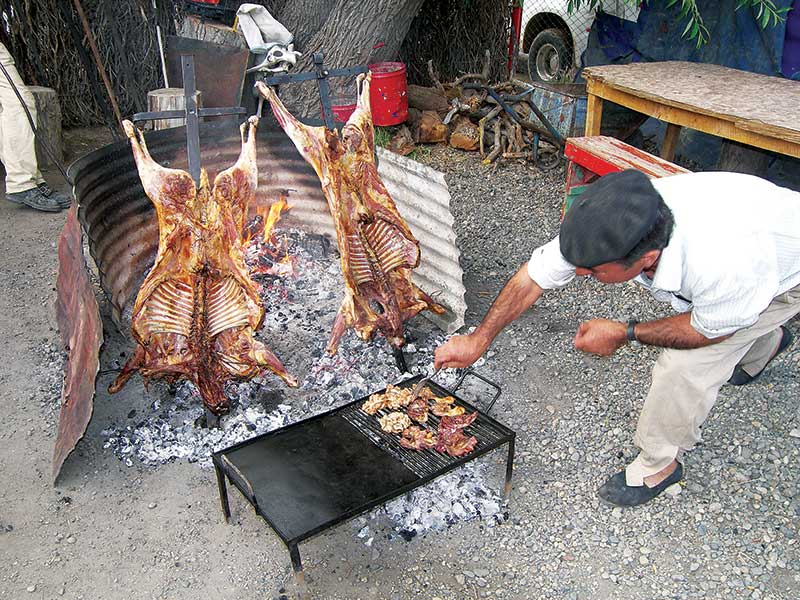
The lasting memories of this once-in-a-lifetime motorcycle trip were the friends we met, the vivid images of dramatic scenery burned into our minds, the feeling of those candy-store-delicious rides and the unique bonding between a father and his sons and a small group of riders who rode from Santiago to the end of the earth.
Our little expedition enjoyed three MotoDiscovery staff—two legendary tour guides Alberto and Roberto (our two “Bertos”) and Francisco, a rugged rugby aficionado, the affable driver of the diesel Mercedes shag wagon. It contained spares and even an arc welder, which fortunately wasn’t needed.
Watching Alberto deeply and confidently bend his knobby-shod KLR into blind Andean mountain corners with sheer drop-offs was worrisome. These roads ask demanding kinetic questions, and the penalty for a wrong answer would be severe. But he’s a veteran of many South American tours and has yet to set a tire wrong on the pavement.
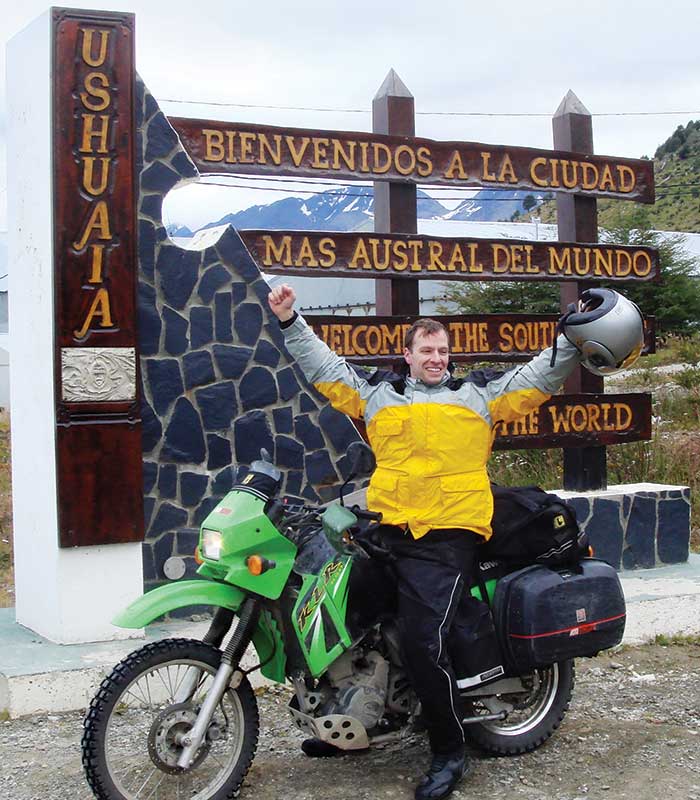
Initially I thought that three staff were overkill, but soon learned that a trio was just right. One for the truck, one to guide and one to ride the bike of an injured rider. During the trip there always seemed to be someone out of commission, whether from la tourista or some physical injury. And in this 5,600-mile sampler, we had a schedule to keep, despite the many miles of gravel.
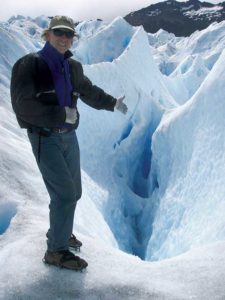
Happily, all of us made it to the finish…some with a little help from the truck.
Author Bill Dutcher founded the Americade rally in 1983. He’s ridden and raced motorcycles since he was a teenager. The summer before he entered Harvard, he rode a used BMW R25 single through Europe, “which set the tone for much of my life.” After college Dutcher became director of marketing for Bultaco Motorcycles and raced its bikes for the next decade. A short stint with Can-Am led to a job as Harley-Davidson’s PR director from 1975-1981. Bill’s son Christian is Americade’s marketing VP, and older son Mickey is a high school Spanish teacher in Vermont.
Riding Tips
Experience: Some off-road experience was vital to being comfortable on the thousands of unpaved miles. A couple in our gang had only a little dirt experience and although they made it through, they were sometimes exhausted by evening; drained by too much of a death-grip on the bars.
Ride relaxed: Despite more than a decade of dirt racing, I found it necessary on days with hundreds of miles of suddenly varying gravel to chant a new-for-me mantra: “Bill rides relaxed, Bill rides relaxed….” It helped relax my wrists; try it yourself.
Pack small: Crosswinds punish frontal and side area, and generate wobbles, so I learned to shrink my seatbag to the minimum as we crossed the wind-swept Argentine Pampas.
Good riding gear: Essential for the varying weather conditions and abuse. Our HJC helmets and Tour Master clothing worked well.
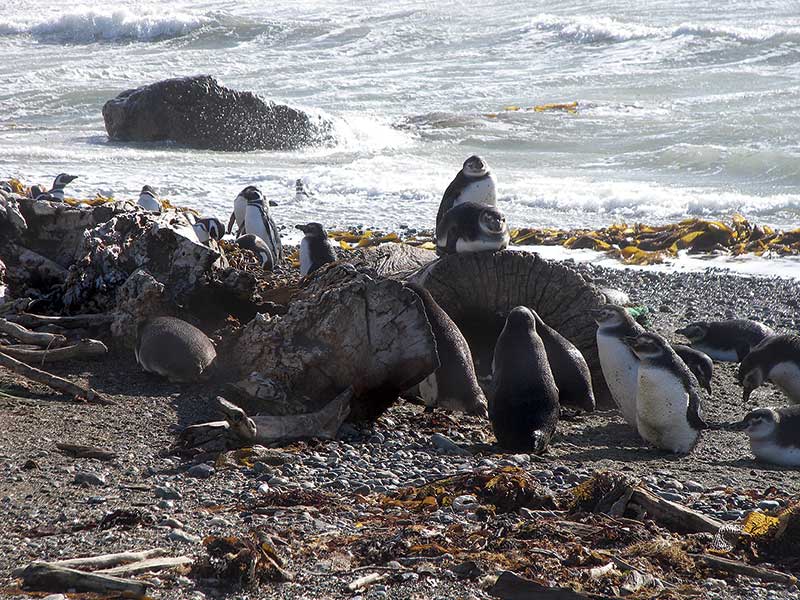
Flashing headlights: We soon discovered that a vehicle approaching and flashing its headlights did not mean “cop ahead.” Just like the many waving children, it meant “We dig what you’re doing.” What a nice change!
Turn signals: Truck drivers often would use their left-turn signals to advise you that it was safe to pass on a curve. Whether legal or not, it was common. That took some getting used to, but I never experienced even one case when the trucker had it wrong. The driving skill of most drivers was much higher than in the USA.
At noon, which way’s north? Away from the sun? Not down here, where the sun is in the north at noon. Your Northern Hemisphere compass won’t help much either (given the great distance to the north magnetic pole). The horizontal and vertical components of the earth’s magnetic field vary significantly when you get south of Mexico, requiring a compass calibrated to the region.
(This article was originally published in the June 2008 issue of Rider, under the title “Riding to the Edge of the Earth: Scenery, Wind and a Few Bumps En Route to Tierra del Fuego.”)





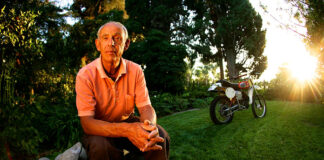



Wow! Thanks so much for sharing all these many details of your trip. I have a friend riding solo down there now. No tour company. He left from Oregon USA in the fall. It sounds like hell on a motorbike! Thanks again.